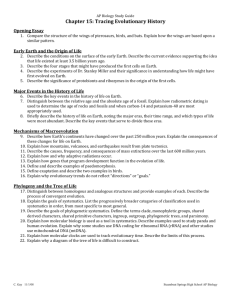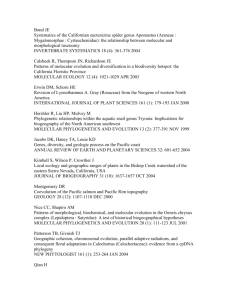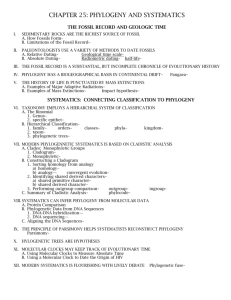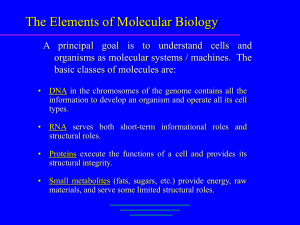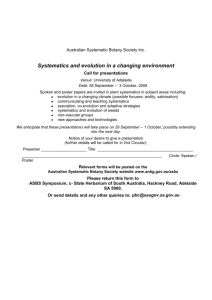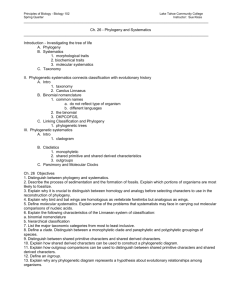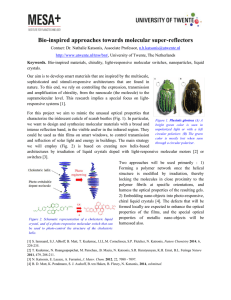Bot3404_11_week6.2 - Ecological Evolution - E
advertisement
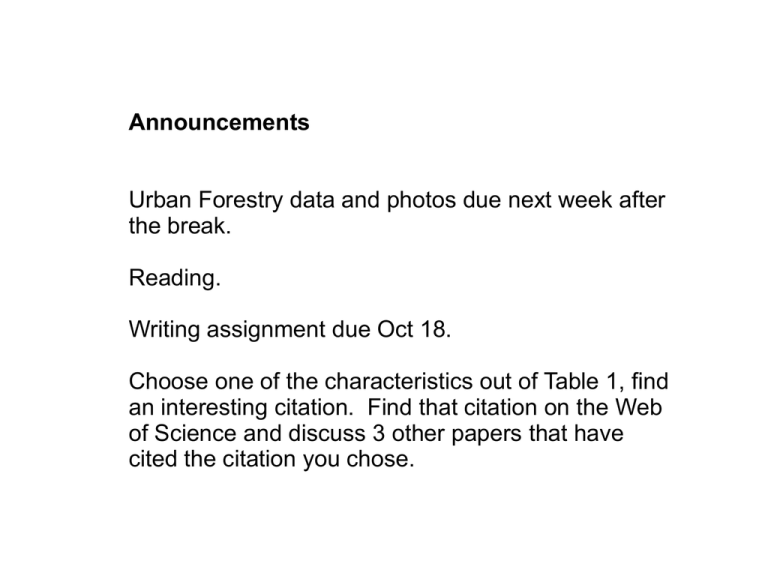
Announcements Urban Forestry data and photos due next week after the break. Reading. Writing assignment due Oct 18. Choose one of the characteristics out of Table 1, find an interesting citation. Find that citation on the Web of Science and discuss 3 other papers that have cited the citation you chose. “Forests” ~300 million years ago – Prototaxites TREES High levels of genetic diversity but slow mutation and speciation rates. High local genetic diversity with high rates of gene flow. (paradox?) Species integrity despite apparent interspecific gene flow. TREES “Wood” is produced by most plants. Another example that evolution primarily builds upon existing genes, instead of evolving new ones. PHYLOGENETICS reconstruction of the historical relationships among organisms. An important framework for understanding the evolution of adaptive traits – – Is it convergence? – Has it happened multiple times? – What is the sequence of events? MOLECULAR SYSTEMATICS Polymerase chain reaction – probably one of the most useful and important discoveries in biological research. Amplifies a specific region of DNA out of the entire genome, so that you go from having a few copies to having millions of copies. MOLECULAR SYSTEMATICS The 3 different genomes in a plant cell provide different information about the history of the organism. The chloroplast has been extensively used because it has several good qualities: structure is very stable and it is primarily inherited through the mother plant. MOLECULAR SYSTEMATICS Different parts of the genome evolve at different rates. These different rates provide insight into different depth of history. – Exons vs. introns – 3rd vs. 1st and 2nd positions in codons – Balancing vs. Directional selection MOLECULAR SYSTEMATICS Next-gen sequencing Whole genomes are routinely being sequenced now. This will eclipse PCR as the next major revolution in biology. BIOINFORMATICS This field is also rapidly changing and will be on the frontier of discovery for the next decade. Our ability to gather and process information has greatly outpaced our ability to understand and interpret it. MOLECULAR SYSTEMATICS Sequence alignment is critical and sometimes difficult. With genomics, we can now look at structural features, like major inversions, translocations, or copy number changes. MOLECULAR DATA Ribosomal DNAs Low copy number genes Expressed Tag Sequences MOLECULAR DATA “Saturation” - information has been erased through time. Long branch attraction

